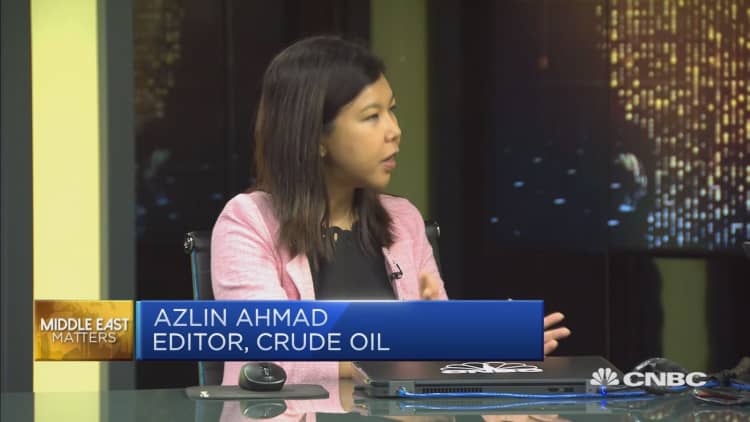Oil futures ended the session lower after back-and-forth trading on Monday, as Saudi comments indicating OPEC would extend supply cuts supported prices, while concerns that U.S. tariffs on China and Mexico would hurt demand weakened crude market sentiment.
Saudi Arabia signaled that OPEC, together with Russia, would continue managing global crude supplies to avoid a surplus.
"We will do what is needed to sustain market stability beyond June. To me, that means drawing down inventories from their currently elevated levels," Energy Minister Khalid al-Falih was quoted as saying by the Saudi-owned Arab News newspaper.

U.S. West Texas Intermediate crude futures settled 25 cents lower at $53.25 per barrel, slipping half a percent to the weakest closing price since Feb. 12. Earlier in the session, WTI hit a session high of $54.63 per barrel.
Front-month Brent crude futures fell 71 cents, or 1.2%, to $61.28 per barrel, settling at a four-month low. Prices dropped by more than 3% on Friday, with May recording the biggest monthly loss in six months.
Brent crude prices have dropped almost 20% from their 2018 peak as global supplies tighten following output curbs by OPEC and Russia, as well as a reduction in Iranian and Venezuelan exports due to U.S. sanctions.
The recent selloff likely helped to solidify the intention of Saudi Arabia to keep tightening output, analysts said.
"This selloff has to have gotten their attention yet again and is precluding them from increasing production," said John Kilduff, an analyst at Again Capital.
Saudi Arabia pumped 9.65 million barrels of oil per day in May, a deeper cut than its production target under the global pact to reduce oil supply, a Saudi oil industry source said on Monday. The nation's output target under the OPEC-led pact is 10.3 million bpd.

A planned June 4 strike by Norwegian workers could also lead to tighter global supply and buttress prices, potentially cutting Norway's oil and gas output by about 440,000 barrels of oil equivalents per day if mediation efforts fail.
Concerns that a U.S.-China trade war, and threats of tariffs on Mexico from the United States, would diminish global crude demand, however, weighed on oil prices.
"Focus has shifted from the supply to the demand side as a U.S.-China trade agreement has proven elusive and as worries over the debilitating effects of tariffs on global economic growth have now shifted to Mexico," Jim Ritterbusch of Ritterbusch and Associates said in a note.
Crude futures fell with the stock market on Monday after data showed a closely-watched gauge of U.S. manufacturing activity slumped to its lowest level in 2½ years in May.
Mexico on Monday said it would reject a U.S. idea to take in all Central American asylum seekers if it is raised at talks this week with U.S. President Donald Trump's administration, which is threatening to impose tariffs over immigration concerns.
— CNBC's Tom DiChristopher contributed to this report.

